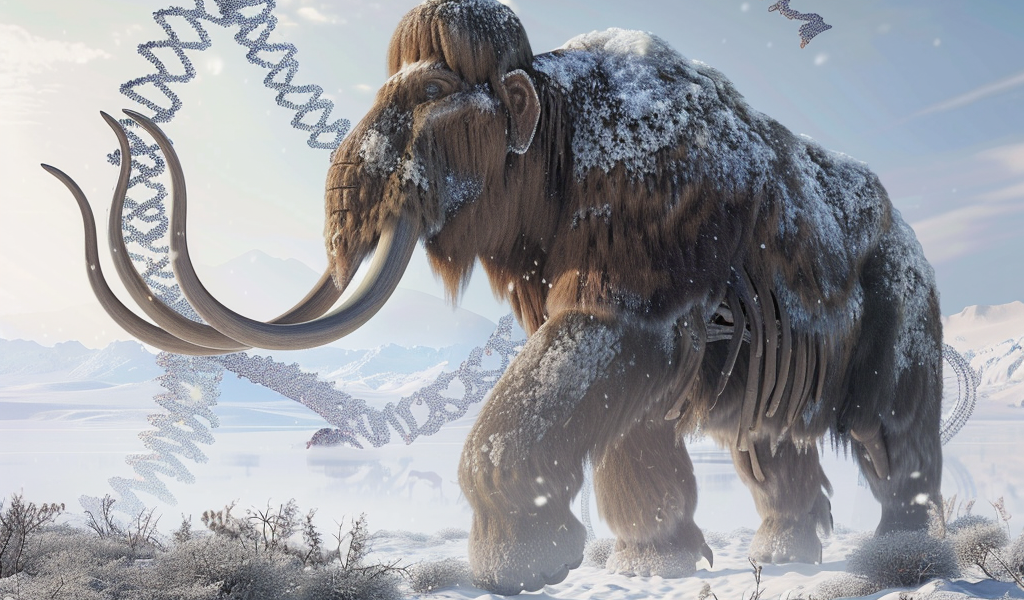In a groundbreaking discovery, scientists from Texas have successfully replicated DNA from a remarkable 52,000-year-old woolly mammoth specimen. This achievement marks the first time researchers have been able to extract and replicate the DNA of an ancient animal from fossilized remains, opening new avenues for understanding prehistoric life.
The well-preserved carcass, which resembles jerky, was uncovered in Siberia in 2018 and has since provided invaluable insights into the genetics of this extinct species. The research team, which included experts from various international institutions, published their findings on July 11 in the prestigious journal Cell.
Marcela Sandoval-Welasco, a co-author of the study from the Center for Evolutionary Hologenomics at the University of Copenhagen, highlighted the significance of the discovery. “We’ve known that tiny fragments of ancient DNA can survive for long periods of time,” she stated. “But what we found here is a sample where the three-dimensional arrangement of these DNA fragments was frozen in place for tens of millennia, thereby preserving the structure of the whole chromosome.”
Unlike typical ancient DNA fragments, which can be limited to about 100 base pairs in length, the fossil chromosomes extracted from the mammoth sample span hundreds of millions of genetic letters. This extensive length allows scientists to glean new insights into the evolutionary history of life on Earth that were previously unattainable.
Through their research, scientists determined that the woolly mammoth possessed 28 pairs of chromosomes, a number that matches that of modern elephants. This finding not only reinforces the genetic connection between these species but also provides a clearer picture of how certain traits evolved over time.
One of the most intriguing aspects of the study was the examination of gene activity within the mammoth’s skin cells. Using a phenomenon known as chromosome compartmentalization, researchers were able to identify which genes were active and which were inactive. Notably, they discovered that genes associated with hair growth were activated in mammoths but not in their modern elephant relatives.
Olga Dudchenko, an assistant professor at the Baylor College of Medicine and another co-author of the study, emphasized the implications of their findings. “By comparing ancient DNA molecules to the DNA sequences of modern species, it’s possible to find cases where single letters of the genetic code have changed,” she explained. “Fossil chromosomes are a game-changer because knowing the shape of an organism’s chromosomes makes it possible to assemble the entire DNA sequence of extinct creatures.”
The preservation of the mammoth’s skin in permafrost for thousands of years has allowed researchers to conduct detailed genetic analyses that were once thought impossible. This discovery not only enhances our understanding of the woolly mammoth itself but also provides a framework for studying other extinct species.
As scientists continue to explore the genetic landscape of ancient life, this breakthrough may pave the way for further discoveries that could reshape our understanding of evolution and the relationships between extinct and modern species. The ability to replicate ancient DNA opens new doors for research in evolutionary biology, genetics, and conservation efforts.
The implications of this research extend beyond academic curiosity; they raise questions about the potential for de-extinction and the ethical considerations surrounding such endeavors. As technology advances, the possibility of bringing back extinct species, such as the woolly mammoth, becomes increasingly plausible.
In addition to its scientific significance, this discovery also captures the public’s imagination, highlighting the enduring fascination with prehistoric creatures and the mysteries of our planet’s past. The woolly mammoth, with its iconic appearance and storied history, continues to be a symbol of the ancient world.
As researchers delve deeper into the genetic makeup of the woolly mammoth, they may uncover further insights that could inform conservation strategies for endangered species today. Understanding the genetic adaptations that allowed the mammoth to thrive in its environment could provide valuable lessons for modern species facing the challenges of climate change and habitat loss.
With each new discovery, the story of the woolly mammoth becomes more intricate, revealing the complexities of evolution and the interconnectedness of all life on Earth. The work of these Texas scientists and their international collaborators represents a significant step forward in the field of paleogenetics, offering a glimpse into a world that has long since vanished.
The research community eagerly anticipates the future implications of this study, as it may lead to new methodologies for studying ancient DNA and further explorations into the genetic histories of other extinct species. The woolly mammoth’s legacy continues to inspire scientific inquiry and deepen our understanding of the natural world.





